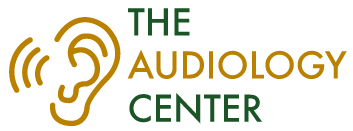
Phonak Research
Listening Effort, Speech Intelligibility, and Narrow Directionality (Mejia, J., Carter, L., Dillon, H., and Littmann, V. The Hearing Review. v 24. No 1, Jan 2017.
Editor's Note: This study was not conducted by anyone affiliated with Phonak but it is relevant to the narrow directionality that Phonak utilizes. Phonak was the first company to have their active directional hearing aids approved by the FDA to make the claim that they reduced background noise...an industry first in the mid-1990's. Since that that time, Phonak has refined this technology to the Binaural VoiceSteam features that will be described below the excerpts from the research article. First I will briefly review that article that came out of the prestigious National Acoustics Laboratory in Sydney, Australia.
Any text that appears in blue is text has be changed slightly to make this study more understandable to the lay reader.
"It is well-established that people with sensory neural (permanent) hearing loss have more difficulty than normal hearers in understanding speech in many noisy places it has also been shown that, compared to normal hearers, hearing-impaired listeners require significantly more mental effort to attend to, and understand, an auditory message. Although hearing aids significantly reduce the metal demands in listening, communicating in noise remains considerably challenging, particularly in poor signal-to-noise ratio listening conditions."
Directional features in hearing aids have been shown to significantly reduce the effort exerted when listening and noise. Although directional features can degrade sound localization, listeners appear to tolerate this in order to obtain the improved sentence recognition in noise and lower listening effort these features provide. Directional features and hearing aids have been show to provide greater acceptance of hearing aids in every day listening compared to omni-directional microphones. Furthermore it has been postulated that individuals with a greater degree of hearing loss, who are consequently least able to use localization cues, and to have greater difficulty listening in noise, are more likely to benefit from highly directional amplification strategies. The focus of this experiment was to examine the effect of a specific narrow directionality feature (also known as "binaural beam forming" or "super-directional microphone") and speech intelligibility and self rated listening effort, tested in extremely challenging listening conditions.
Summary and Implications.
"The implications of these results for real world listening situations are compelling; however, it is acknowledged that this experiment evaluated listening to frontal target speech surrounded by a contrived speech babble from other horizontal directions. Nevertheless, most listeners with moderate hearing loss, when aided with narrow-directionality, understood speech as well as approximately age-matched, normal or near-normal hearing listeners without hearing aids. A hearing-impaired listener with an average hearing loss of 52 dB HL (approximately a 50-55% permanent hearing loss) would, on average, hear as well using this (narrow directionality) technology in this listening situation as the average age-matched person with normal or near normal hearing."
"Similarly, based on this study, a hearing-impaired listener with this hearing loss (approximately 60%) would, on average, exhibit the same listening effort as an average age match normal hearing listener.
The researchers acknowledge that they used "closed dome" fittings that did not allow significant noise to enter their subject ears acoustically. Additionally it should be acknowledged that with more significant hearing loss is the amplified signal from the hearing aid is the dominant signal and noise entering the acoustic vent is less important as the degree of hearing loss increases.
Another Editor's Note. The above article, mention's "Listening Effort" but does not discuss it because this is a subject that is well understood by audiologists. Obviously, reduced "Listening Effort" sounds like a desirable feature...but it is also a critical feature. If the listener has to use significant cognitive energy to keep up with what is being said, this is exhausting and it is also disruptive to comprehending speech. If the hearing impaired listener is using their intellect and knowledge of language and linguistics to decipher what was just said, they will often miss entirely the next phrase that is spoken. Reduced listening effort helps the listener keep up with a conversation and, at the same time, reduces stress and fatigue.
Phonak Binaural VoiceStream Technology
Phonak has pioneered directionality and narrow directionality for the last 20 years. They were the first company to be allowed by the FDA to advertise noise reduction hearing aids using active directionality... an industry first in the mis-1990's. Since that time they have refined this technology to the AutoSense OS Technology that they now use in their hearing aids. This technology automatically recognizes the listening environment and then seamlessly transitions the hearing aid user into the optimal listening program… whether that is a "surround sound" program for quiet listening environments or a very focused directional microphone program that uses both hearing aids in a narrow directionality (beam forming) mode. All Phonak hearing aids use this automatic transitioning program but Phonak's most advanced hearing aids use it optimally and give the user more choices for additional listening programs. Phonak's most advanced Binaural VoiceStream programs are available in the "70 and 90" technology levels. To understand this better, let's review the options that are available at the V90 and B90 technology levels:
At the "90" technology levels there are now seven programs through which AutoSense automatically and seamlessly transitions utilizing 33 processing channels as required:
1. Calm. The listening program for quiet places. Minimal directionality is typically used in this program...usually just enough to mimic the "pinna effect". The "pinna" is the funny shaped thing on the side of our head's that actually gives our ears a slight frontal focus. Have noticed that many land animals can swivel their ears to better hear a potentially threatening sound...that's the front focus that is typically added even in the "Calm" memory for quiet places.
2. Speech-in-Noise. An active directional microphone (narrow directionality) program for listening in noisier environments.
3. Speech-in-Loud Noise. This is the Binaural VoiceStream program that uses all four hearing aid microphones to form a narrow Directional Beam to focus in on the person that the hearing aid user is facing and maximally reduces sounds coming from all other directions. Additionally, this advanced technology recognizes the hearing aid (the left one or the right one) that is receiving the best speech-to-noise ratio, and puts that signal into both hearing aids to maximize speech understanding and to reduce listening effort.
4. Speech-in Car. This program automatically recognizes that the hearing aid user is driving in the car and sets the hearing aid into a program that optimizes speech understanding under typical car listening conditions. Below, I will also describe the Binaural VoiceSream program (Speech in 360°) that can further maximize speech understanding in situations like driving in the car.
5. Comfort-in-Noise. This automatic program recognizes that the user is in a noisy place and that there is no speech present. In this condition, the hearing aid will automatically reduce background noise on a frequency by frequency basis to keep the listening environment as comfortable as possible.
6. Comfort-in-Echo. Reverberation or echo even in a quiet room presents the most difficult listening situation because the signal that you want to listen to is acting like an extremely effective masker. This is a more difficult listening situation than listening to speech when there is non-related background noise. This program can actually recognize the primary, secondary, and tertiary reflections of speech that create the echo. This program using timing differences that can reduce echo and significantly improve speech intelligibility.
7. Music. Music appreciation is something that varies from patient to patient. This gets a bit technical: the anti-feedback circuitry in Phonak hearing aids uses phase shifting and frequency shifting to minimize acoustic feedback (that annoying whistling sound that sometimes affects hearing aids that don't utilize this technology or do not uses this technology effectively). Depending on the patient and the type of music that they listen to, some custom programming will be required...depending on the patient and the type of music that they listen to. We will want to minimize the phase shifting and frequency shifting for the high-pitched sounds in music (violins, piccolos, etc.) especially for classical music listeners. For listeners of pop music, usually a bit more bass will be required.
We should also include all of the Bluetooth Streaming in a discussion the AutoSense automatic programs, as they require no additional program changes by the user. Phonak has more wireless listening devices then any other hearing aid company. They are definitely the world leader in this area. Whether it is automatically connecting a Bluetooth enabled cell phone, home phone, or television... or whether it's using remote microphone technology, Phonak is the world leader. Every company makes choices as to what types of wireless devices they will connect to. Phonak does not make telephones specifically for iPhones but instead makes their hearing aids connect with all Bluetooth enabled devices whether that is an iPhone, and Android Smart phone, or a Bluetooth enabled flip phone. Phonak's wireless devices are discussed in more detail by returning to the Phonak Hearing Aid Pricing page and scrolling down to Phonak Wireless Devices where the available devices are described and the prices are listed.
Additional Binaural VoiceStream programs.
Speech in 360°. This is an innovative Binaural VoiceStream program that actually can improve performance in situations like speech in a car. In this program, the hearing aid will actually automatically zoom left, zoom right, zoom toward the backseat, or go into the standard front facing microphone program. You can imagine that if you're the driver with your left ear next to the window, there's really not much information that you need to get from the window. In this case, if the passenger was speaking, the hearing aid would directionally focus on the person to your right and then put that same signal into both ears to maximize speech intelligibility. In the opposite condition, the hearing aid can do this from the passenger seat as well...and can focus toward the backseat if required.
Speech-in-Wind. This is another innovative Binaural VoiceStream program that is especially good for outdoor's persons and golfers. Wind very seldom comes from directly in front of the hearing aid user. It is almost always at an angle. In this situation, the hearing aid will recognize the hearing aid that is getting the most wind noise and takes the better signal from the opposite ear and puts that into both hearing aids… once again maximizing sound intelligibility and speech intelligibility in a very difficult listening situation.
DuoPhone. This Binaural VoiceStream program is available in most Phonak hearing aids regardless of technology level. This program can be made automatic or made manual (so that the user can select it as needed). If the patient is not using a Bluetooth phone that connects directly to their hearing aids, then the Duo-Phone option can put the speaker's voice into both hearing aids… once again maximizing intelligibility through the use of both ears.
Note: These additional programs can be selected using a Remote Control, a Bluetooth Streamer, a program selection button on the hearing aid (that switches both hearing aids with one touch) or the multi-function push button on the new Phonak Belong series instruments.

